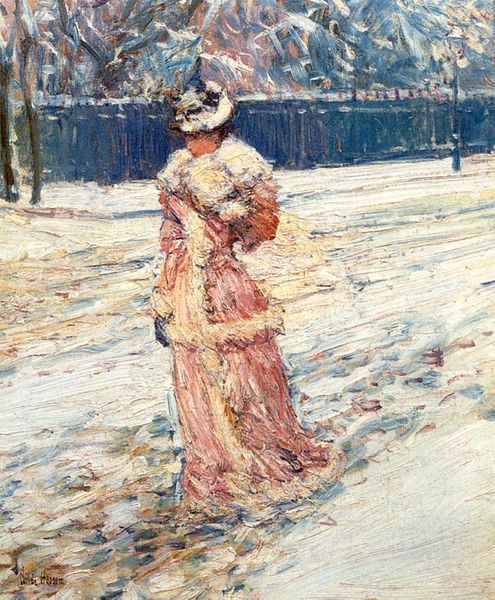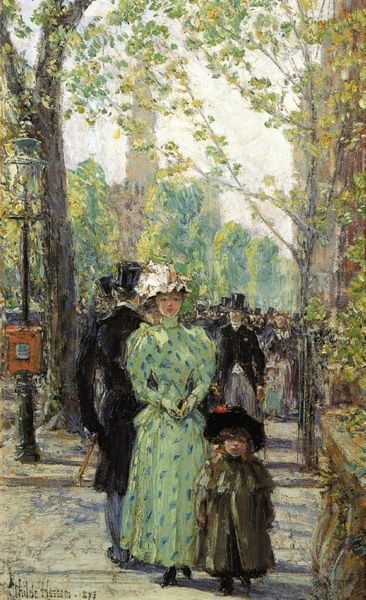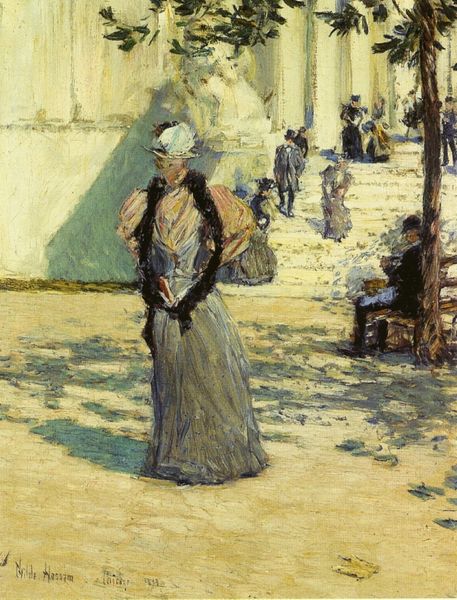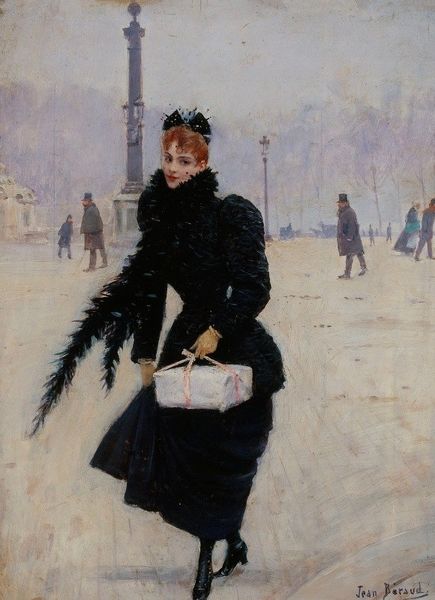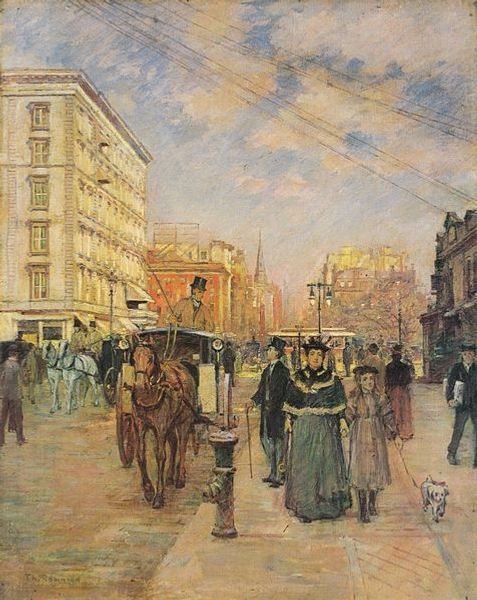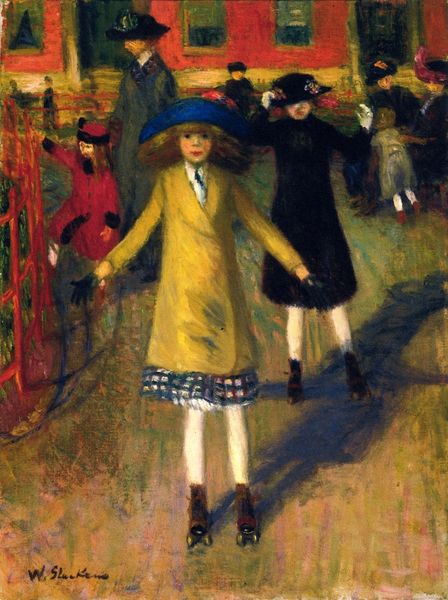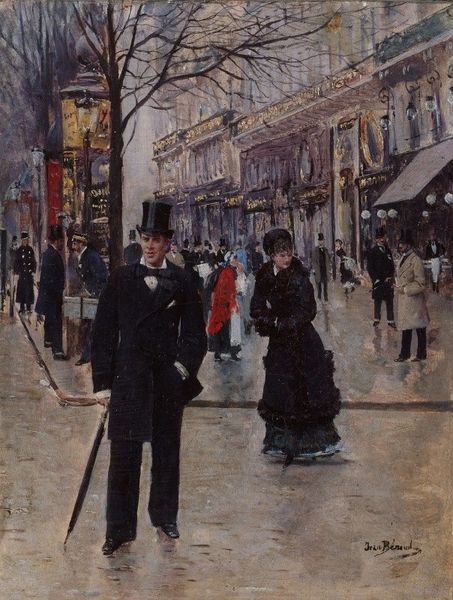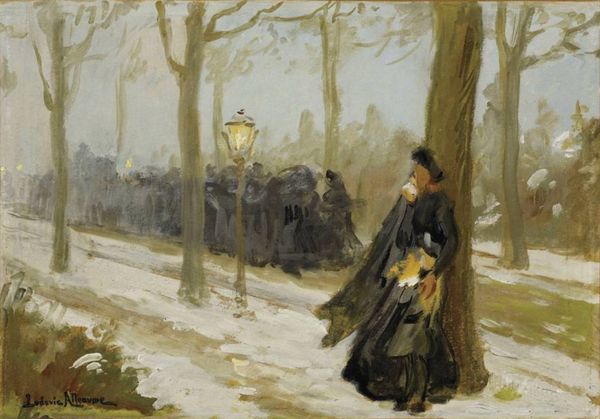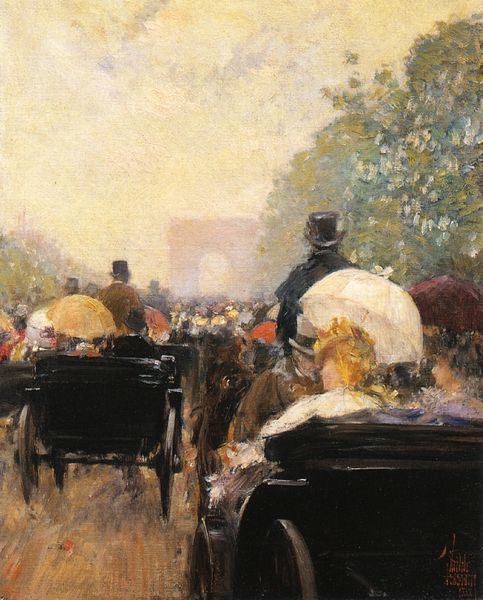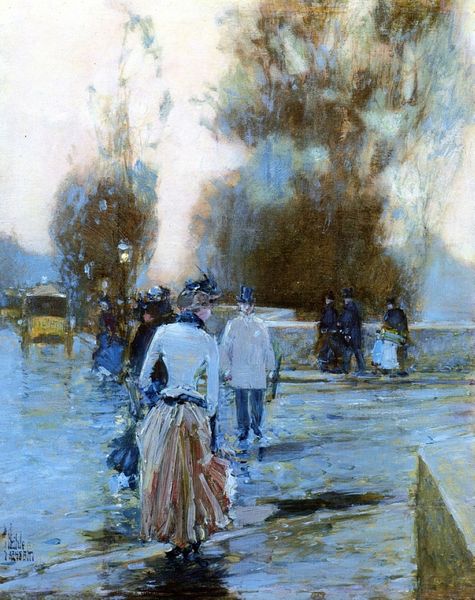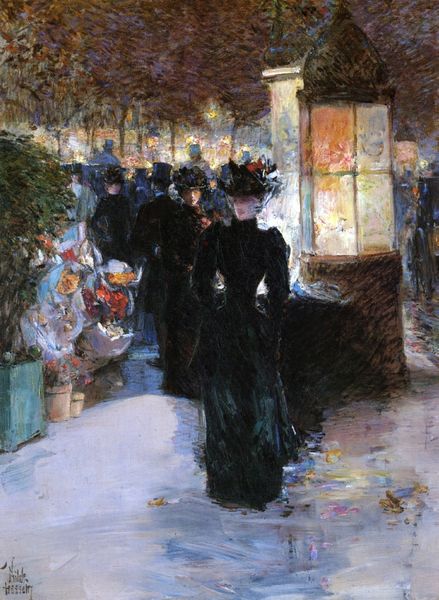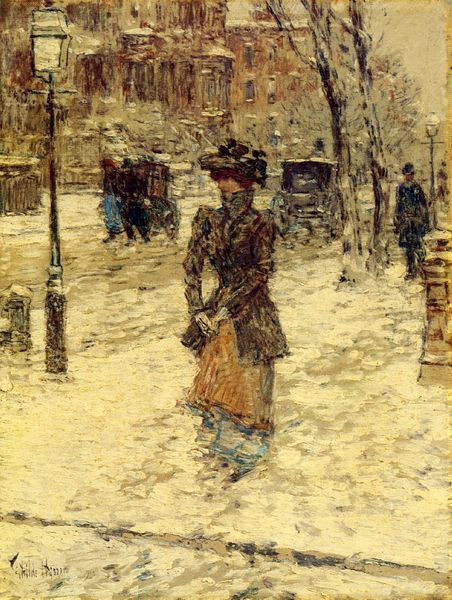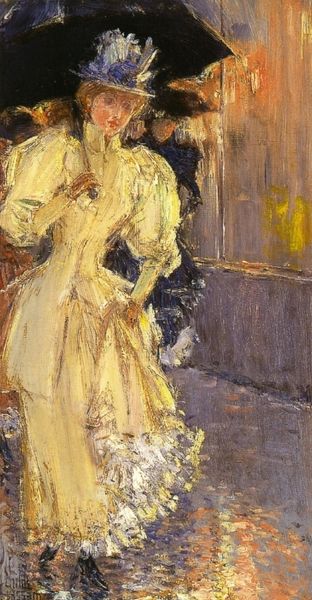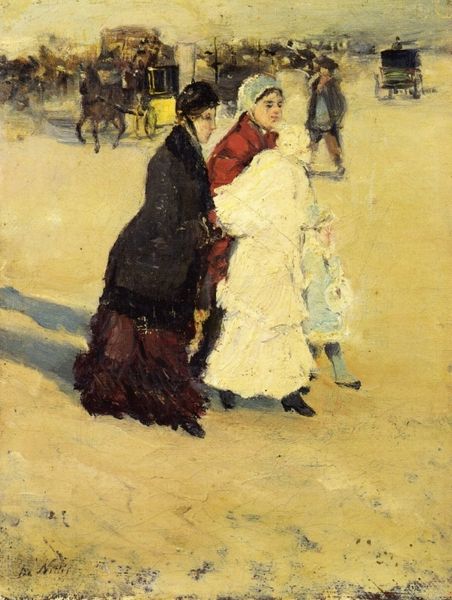
gouache, watercolor
#
portrait
#
gouache
#
impressionism
#
gouache
#
street view
#
vehicle
#
figuration
#
oil painting
#
watercolor
#
road
#
cityscape
#
street
#
watercolor
#
building
Copyright: Public domain
Curator: Childe Hassam's "New York Street Scene," created in 1890, presents us with a vibrant snapshot of urban life in that era. I’m immediately drawn in by the cool hues contrasting against the figure at the forefront. Editor: Indeed, there's an almost palpable sense of energy, bustling thoroughfare rendered in watercolor and gouache, right? You almost feel the chill of the air and the dampness of the pavement. I am thinking about the production of those early pigments in relationship to consumer culture and burgeoning urban environments in late 19th century American. Curator: That makes me consider the women portrayed, front and center. To me, she embodies the aspirations and constraints of women in the 1890s. Note the detail in her attire – the elaborate dress, hat – symbols of status, while perhaps masking the limitations placed upon her. We can see these markers in context with second wave feminist movements. Editor: Absolutely. Consider the labor involved in producing those garments, those intricate details, versus the burgeoning availability of ready-to-wear fashion, all enabled by increasingly mechanized production processes and distribution networks. The horse drawn vehicles here signal industrial growth too, consider labor laws surrounding exploitation during this time period. Curator: It makes you wonder, doesn't it, about her participation within the city space, navigating a terrain still largely dominated by men. Her gaze is directed, and sharp and this directs my perception too. Are we, the viewers, implicated within that male dominated gaze, or is there more than meets the eye? Editor: It's interesting to think about how the materials used also speak to social stratification. Gouache and watercolor allowed for accessibility in artwork for a growing demographic. Did the availability of these materials shift conceptions about "high art?" It almost begs questions about authenticity. Curator: Fascinating to contemplate art as a site for the negotiations of identity and power, with the city as a landscape of both opportunity and exclusion, with new avenues for the distribution and consumption of art to reach new and wider audiences. Editor: This intersection really demonstrates the fascinating dynamic that emerges when we juxtapose historical artistic practice with social realities through materialism, revealing how labor and economic status really can influence the production, consumption, and interpretation of art in very concrete ways.
Comments
No comments
Be the first to comment and join the conversation on the ultimate creative platform.
